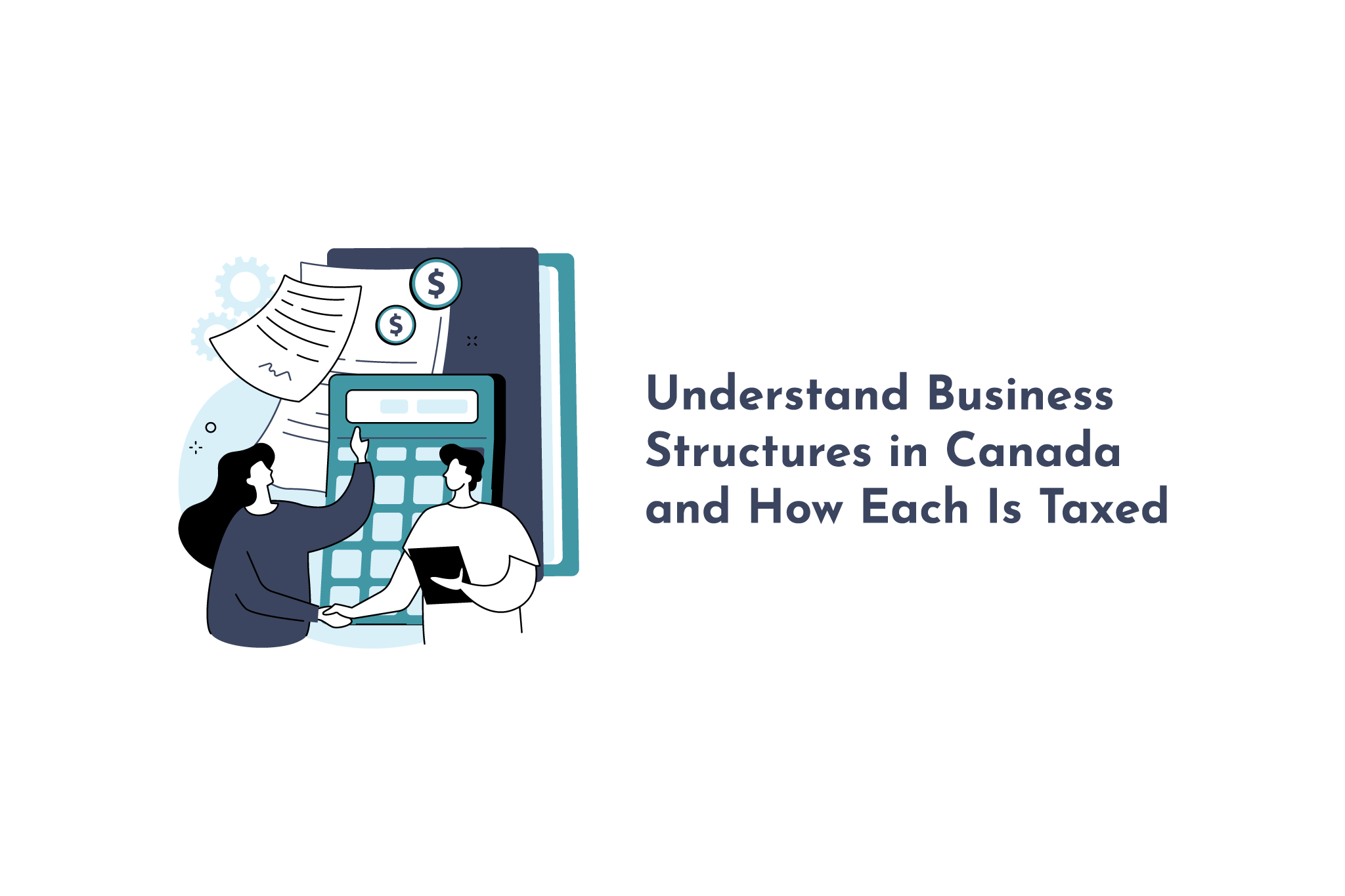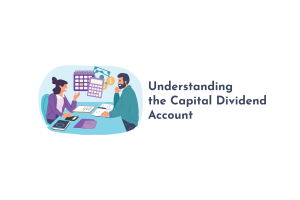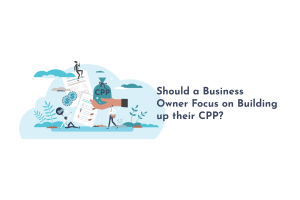In an extremely well-known idiom, Ben Franklin is said to have noted that in this world, nothing can be said to be certain except death and taxes. This was from a letter Franklin wrote in 1789, and it still holds true today. Everyone dies, and everyone pays taxes; these are certainties in life. As a Canadian entrepreneur, you need to know that taxation is one of the inevitable areas of doing business in Canada and worldwide. How much tax you pay and when you must pay it are dependent on a few different things, though. Some of the primary deciding factors in how your business will be taxed include your business structure, size, and overall income. In this article we will review the different business structures in Canada and how each is taxed.
I get it; taxation is complicated. Have you ever actually seen the manual that Revenue Canada produces that annually updates the tax code? It comes out every year and is often very thick, and if you aren’t a tax expert, it is not something that you’re likely to sit down and read for fun. In fact, many business owners find the subject of taxation overwhelming, and this is why they hire accounting experts to take care of everything. Even though you don’t need to know the tax code by heart, as a business owner, it’s essential to have a grasp on the basics of business taxation in Canada. This includes the types of taxes your business is subject to and the different tax credits and deductions available. Whether you’re new to running a business or just want to understand how taxation works in Canada, read on to discover how business taxation works in Canada.
In this article:
- Different business structures in Canada
- Sole proprietorship
- Partnerships
- Corporations
- Final Thoughts
Different Business Structures in Canada
When starting a business, choosing the structure that suits your needs (and those of your potential customers) is important. You also need to remember that how you structure your business affects the tax rules that apply to it. Depending on what legal structure you choose for your business, there will be different requirements for how you report your income and the type of tax returns you file annually.
There are three main types of businesses in Canada you can choose from when starting your business. But before deciding, you should examine the pros and cons of each (concerning taxation).

Different Business Structures in Canada: Sole Proprietorship
A sole proprietorship is the simplest business structure you can start in Ontario. This style of business is owned and managed by one individual. The good thing about starting a sole proprietorship is that it doesn’t require filing provincial or federal forms. What’s more, the business has few regulatory burdens. One of the reasons for the simplicity of establishing this type of business is that, as a sole proprietor, you don’t have separate legal status from the business. You’re responsible for making business decisions, receiving all profits, claiming all losses, and assuming all business risks. Taking on all the risks extends to your personal assets and property. For instance, if you take a loan and fail to pay, the lender can take your personal property to settle the loan.
As a sole proprietor in Canada, you must report all income or losses on a T1 income tax and benefit return. So, you (or your authorized representative) must file a T1 return if
- you have to pay tax for the year.
- You need to make Canada Pension Plan/Quebec Pension Plan (CPP/QPP) payments on pensionable or self-employed earnings for the year.
- You disposed of a capital property or had a taxable capital gain in the year.
- You want to access employment insurance with special benefits for self-employed persons.
- You have received a request from the Canada Revenue Agency (CRA) to pay taxes.
The biggest tax advantage of operating a sole proprietorship is the simplicity. Since you don’t pay business and personal taxes separately, there are fewer tax filings required.
Advantages of sole proprietorships
- Less paperwork: A sole proprietorship doesn’t require you to complete much paperwork, making it the most straightforward business structure in Canada. Unlike other structures, you become a business entity just by doing business. However, you still need to get business permits and licenses depending on the provincial or local government’s requirements. Less paperwork allows you to get your business off the ground quickly.
- You have complete control: A sole proprietorship gives you full control of your business. This is because the company is tied to you. You don’t need to consult anyone before making decisions (though you may choose to). This makes the decision-making process much faster and simpler.
- Straightforward banking: Sole proprietorships don’t require a separate business bank account, unlike other business structures. This means you can make or accept payments from your personal bank accounts. However, you can still get a separate checking account for your business.
Disadvantages of sole proprietorships
- Lack of liability protection: A sole proprietorship allows you to operate the business as you see fit. However, this freedom comes with a disadvantage. You’re personally liable for your business’s financial, legal, or tax problems because you have no legal separation. You are the business; the business is you. For instance, if someone sues your business for malpractice, your personal assets, including cars and home, can be seized to cover expenses. With other types of business structures, the business is legally separated from the owner. This means that the personal risk is highest with a sole proprietorship.
- Difficult to get financing: Sometimes, it’s difficult for a sole proprietor to secure loans or funding for the business. Many lenders are hesitant to lend money or give credit to sole proprietors. Moreover, you’ll find it challenging to get buy-ins from investors because your business is not formally recognized. However, you can consider alternative financing options like bootstrapping and crowdfunding.
Different Business Structures in Canada: Partnerships
A partnership is a business owned and operated by two or more people. The parties agree on how they will run the business and share the profits (and losses). There are various types of partnerships, including;
- General partnerships: All parties share legal and financial liability equally.
- Limited liability partnerships: This is common for professionals like lawyers and accountants. The structure limits partners’ personal liability. For instance, if one partner is sued, the assets of other partners aren’t at risk.
- Limited partnership: This is a hybrid of general and limited liability partnerships.
Partnerships are fairly easy to form, just like sole proprietorships. However, they are governed by a written agreement between the parties. This isn’t required for a sole proprietorship.
Taxes and partnerships
In Canada, a partnership itself doesn’t pay income tax on its operating results. Moreover, it doesn’t file annual income tax returns. Instead, each partner includes their share of the income or loss from the partnership in their income tax return. Moreover, each partner must file financial statements or copies of specific forms that apply to their situation.
Advantages of partnerships
- Fairly simple to set up and maintain
- Pass-through taxation
- Partners can pool capital, labour, and expertise
- Partners share risks
- New perspectives and varied expertise
Disadvantages of partnerships
- Profits are shared
- Potential liabilities
- Slower, more complex decision-making
- Potential for conflicts

Different Business Structures in Canada: Corporations
A corporation is a legal business structure that separates the owner/operator from the business. What this means is that there is a separation of your personal and business assets. Unlike the other formats, if someone sues your incorporated business, your personal assets aren’t at risk. You can incorporate provincially or federally, depending on your needs. Your tax filing becomes a bit more complex with this type of arrangement. Your corporation will need to file a tax return based on its year-end and pay corporate taxes; if you draw income from the business, you will need to file a personal tax return based on the calendar year. It is often highly recommended that if you form a corporation, you have tax professionals like an accountant and bookkeeping service help you keep your taxation in line with the requirements.
Advantages of corporations
- Your personal liability is limited.
- Corporate taxation rates are lower than personal rates, potentially saving you money.
- Your business name is protected
- Potential for the capital gains exemption should you sell your business
Disadvantages of corporations
- You must provide annual filings and corporate records
- Complex tax filing—you need to file two tax returns every year, one for your business and one for your personal income
- It costs more to set up a corporation
- Tax rules are more complex
Final Thoughts
Now that you understand the common business structures in Canada, you can begin to make an informed decision about which one suits your needs. However, take note of the legal, financial, and tax requirements of each structure before starting a business in Ontario.
If you still want to understand more about business taxation in Canada and how to grow your business, we can help. We know what it takes to establish a growth-focused financial strategy for your business. Contact us today to learn more about our services.





